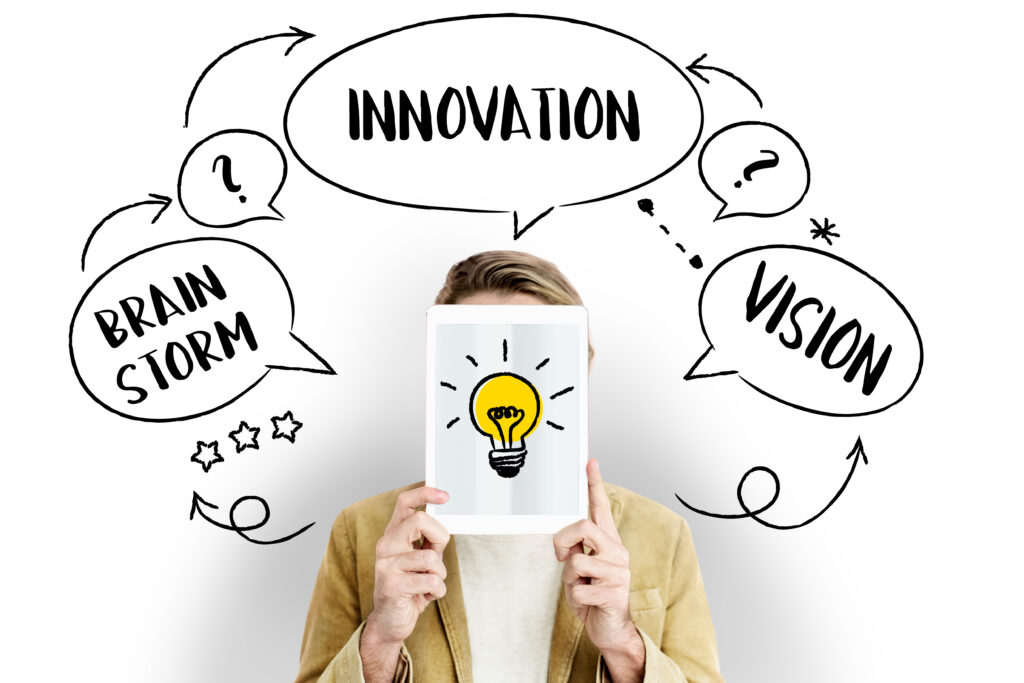Design thinking is an approach to problem solving that begins with deeply understanding human needs. From this understanding, creative ideas developed into relevant solutions that have a real impact.
To build the right design thinking, it is necessary to combine empathy, idea exploration, prototyping, and repeated testing in a flexible process, because this approach helps reduce the risk of failure, maximize the use of resources, and ensure that the solutions produced remain adaptive to market changes as well as consumer behavior.
With its collaborative and human-centered nature, design thinking becomes an essential skill for anyone who wants to innovate, create added value, and survive amid the rapidly changing economic dynamics. How? Here’s the full review.
5 Stages in Design Thinking

Although there are no fixed rules and it is flexible to form the right design thinking, you still need 5 stages that usually used as a guide in creating design thinking.
These stages also interconnected, but not always run linearly, so they can repeated as needed.
Discover More : A Brief Guide to Digital Transformation and Adaptation in Business
Cultivating Empathy
The initial stage in design thinking begins with building a deep understanding of the situation or problem faced. In the process, this is not just about collecting data, but also involves efforts to truly immerse in other people’s experiences.
Cultivating empathy means trying to see the world from their point of view, feel what they feel, and understand the context behind the behaviors or decisions they make. This can be done through direct interaction, observation in environment, or trying to experience conditions they go through.
In this way, one can discover insights that often do not appear in reports or statistical data alone, so that the understanding formed becomes more comprehensive and relevant.
Defining the Problem
After cultivating empathy, the next step is to clearly define the core problem. The goal to ensure that the challenges to be solved truly aligned with the users’ needs and context.
This stage is important because without the right problem statement, the ideas in the next stage risk becoming scattered and off target. Often, the failure of innovation is not caused by lack of creative ideas, but because those ideas do not address real problem.
In this process, all findings from previous stage are analyzed to identify patterns, relationships, and root causes. From here, a concise, directed, and actionable problem statement drawn up.
With the right formulation, the ideation process will more focused and efficient, because each idea can measured for its relevance to the core problem that has been identified.
Generating Creative Ideas
After deeply understanding the problem, the focus shifts to generating as many creative ideas as possible as potential solutions. This stage encourages mind to open and free from limitations, so that various possibilities can be explored without fear of being wrong.
In the ideation process, it is important to create a safe and inclusive atmosphere, where everyone feels comfortable expressing their opinions. The main principle is simple: no idea is wrong, and no criticism should bring others down when ideas are expressed. All contributions are valued, because even ideas that sound unrealistic can spark inspiration leading to major breakthroughs.
Through this approach, diverse perspectives can be gathered, expanding the range of solutions that can later be tested and refined.
Presenting an Initial Picture
Several ideas considered feasible to test are then realized into an initial form that is still simple, or called a prototype. The goal is to provide a tangible picture of the concept, so that its effectiveness can be tested and validated more quickly.
This stage helps to see how the idea works in the real world, while identifying its potential strengths and weaknesses before making larger investments. A prototype does not have to be perfect; it is deliberately made simple so that the testing process can be carried out repeatedly with speed and low cost.
Through the prototype, we can observe user interactions, record emerging obstacles, and collect direct feedback for improvement. Thus, the risk of failure can be reduced, and the chances of the solution succeeding in the final stage become greater.
Testing the Solution
Different from the prototype that focuses on creating an initial picture of the solution, the test stage is the process of testing the solution directly with users. If the prototype helps shape the idea into something that can be seen and tried, then testing ensures whether the solution actually works as intended and meets the identified needs.
In this stage, user feedback becomes a very valuable source of information. Testing does not only assess whether users are able to complete tasks, but also observes their overall experience: whether the steps are clear, whether there are obstacles, and to what extent the solution can solve the existing problem.
Through this process, the solution can be iteratively refined until it reaches the most effective and relevant form for users.
Discover More : Business Leadership Strategies in the Era of Volatility, Uncertainty, Complexity, and Ambiguity (VUCA)
Benefits of the Right Design Thinking for Business

Applying the design thinking method can help businesses create solutions that are truly relevant. This is because, in its process, the method comes from a deep understanding of users or consumers.
With this approach, companies can also avoid spending funds on ineffective ideas and enable teams to move quickly, learn from real failures, and refine ideas before they are fully executed.
In addition, design thinking also encourages cross-team collaboration and unites different perspectives to produce richer and more innovative solutions. The final impact is not only on improving internal efficiency, but also reflected in higher customer satisfaction and the creation of long-term relationships that are mutually beneficial for both parties.
Example of the Right Design Thinking Application in the Real World

One successful example of design thinking application comes from the property rental company, Airbnb. In its early journey, the company experienced very slow growth and had difficulty attracting new users. Instead of spending a large budget on advertising, its founding team chose to understand the problem from the users’ point of view.
They visited property owners and spoke directly with them. From these visits, they discovered the reason why their properties were overlooked: many uploaded photos were unattractive, making potential guests reluctant to book.
The chosen solution? Simple yet effective: Airbnb hired professional photographers to help hosts take better pictures. The result was a significant increase in bookings and became one of the turning points of the company’s success.
All of this proves that design thinking is not just a creative method, but a strategic mindset that places humans at the center of every solution. Through empathy, proper problem formulation, idea exploration, prototyping, and repeated testing, businesses can create innovations that are both relevant and sustainable. This approach not only helps companies survive amid competition but also strengthens long-term relationships with customers.
For organizations that want to continue growing in today’s fast-changing era, Arghajata Consulting is ready to assist your business in effectively implementing design thinking—from innovation project facilitation to building long-term strategies relevant to market needs.
Contact us today and discover how this approach can bring real change to your organization.


















